If you have been aiming to learn the coveted calisthenics tuck planche, then we have the most effective and realistic method for you.
But first, let’s talk about what it’s going to take to learn the skill.
Tuck planche isn’t a skill that you can learn from training random exercises or by just getting strong. Although it’s considered a strength-based skill, general pushing strength will not get you planche.🥺
Tuck planche requires high specific strength and mobility which you can read more of this here: 📍“Planche Muscles Used & Requirements.
Being a strength-based skill, obviously strength is a vital component. Combined with proper mobility, skill, muscle and endurance, and applying them in a well-structured program appropriate for your level, then you’ll have a productive time every session towards planche.
Within this program should have a set of progressions that builds everything you need for the full planche. Progressions are everything in calisthenics.🔥
This is exactly what The Movement Athlete can provide you for your dream, tuck planche: progressions.
So what are progressions? 🤔🤔🤔
Progressions are a set of exercises that covers the mentioned fitness attributes so you can work your way to a particular skill. It starts from the basics and levels up until you reach your goals. It’s basically the way to add intensity so you can develop the necessary requirements for a move.
✨Luckily, even an advanced skill such as a planche has progressions that you can start with earlier in your journey.
After each progression, the next one will be harder and harder. 💪 It will integrate more complex elements as well as increase the intensity of the exercise. You’re kinda like playing a video game. Each progress you make, the level gets harder.
This goes on until you reach the coveted tuck planche.
When Should I Progress?
Sometimes, it’s easy to overestimate your skills especially when you feel strong and confident. We recommend that you take things slowly when progressing. Be sure to be comfortable with the current step before moving forward.
Training progress is highly individualized. Only you can surely know when you’re ready to progress. Don’t worry. With The Movement Athlete, we can guide you as long as you train honestly.
PLANCHE TRAINING STRUCTURE
The training structure consists of progressions that covers all the elements that you need to master in order to master the skill.
When building a training program for any calisthenics skills we always use 4 categories to achieve overall development geared towards your goals:
- ✅ Strength
- ✅ Skill
- ✅ Muscle
- ✅ Endurance
Let’s look at each one of those separately in relation to planche work.
👊SKILL WORK
Planche is a very technical skill and is not just about brute strength. There are specific cues and techniques required mastery of in order to perform it efficiently with perfect form. This will be tackled alongside mobility exercises which benefits strength and skill work all together.
🎯STRENGTH WORK
General strength works a massive advantage for your planche training but specific planche strengthening exercises are our primary focus. These are high intensity exercises which every level has a suitable equivalent variation. Planche strengthening exercises should always be challenging to recruit the muscle fibers and build the skill for planche as well. Both straight-arm and bent arms exercises are included for the most efficient progress possible.
💪MUSCLE WORK
Bigger muscles exhibit more potential to get stronger. In the planche training, muscle work focuses on developing upper-body musculature specific for planche as well as eliminating any possible weaknesses in your body.
🏃ENDURANCE WORK
Planche involves a lot of body holds with proper bodyline. Whether it be static or dynamic exercises, all include a rigorous training of the core. Upper-body also works for longer periods of time to generate volume to ensure strength and muscle gains. Endurance work focuses primarily on core endurance, shoulder stabilization and straight-arm work.
Most training programs divide these elements into separate days.
In The Movement Athlete program, we bring them all together in a single day for the most efficient training that’s suitable for the real world.
Why do we do it this way?
In a world where we have all the time of the world, always full of energy, equipment and resources, we would want to train these elements separately. It’s also beneficial to have separate goals on each day to maximize the output of each training.
Oftentimes, professional athletes train like this. Each day has a dedicated goal which prevents interference of any fatigue. They get to focus on a particular aspect. They also train multiple sessions a day, six days a week and get paid to do that.
Unfortunately for us folks, we do not have the luxury of time, resources and energy to commit to such a schedule.
This is why The Movement Athlete puts its focus on different aspects. It allows a more realistic way to train on a tight schedule. This doesn’t hinder our progress but even promote it as we are unable to train for hours within a day while still covering the important elements of our goals.
PLANCHE PROGRESSION
STAGE 1: TUCK PLANCHE
Achieving a planche its a long journey that’s why in The Movement Athlete we divided the training into two stages;
STAGE 1. TUCK PLANCHE
In this article we will focus on the progression to tuck planche but if you want to access all the exercises please download our PDF of The Ultimate Guide to Planche or signup for our free version of the app through the free assessment
STAGE 2: FULL PLANCHE
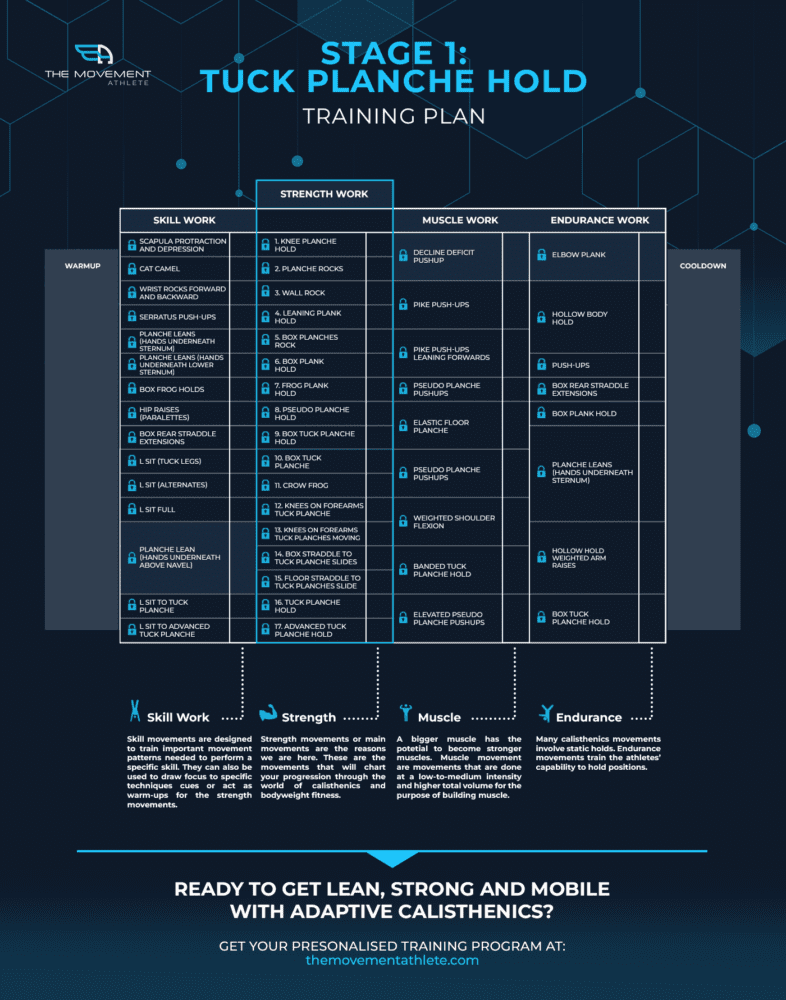
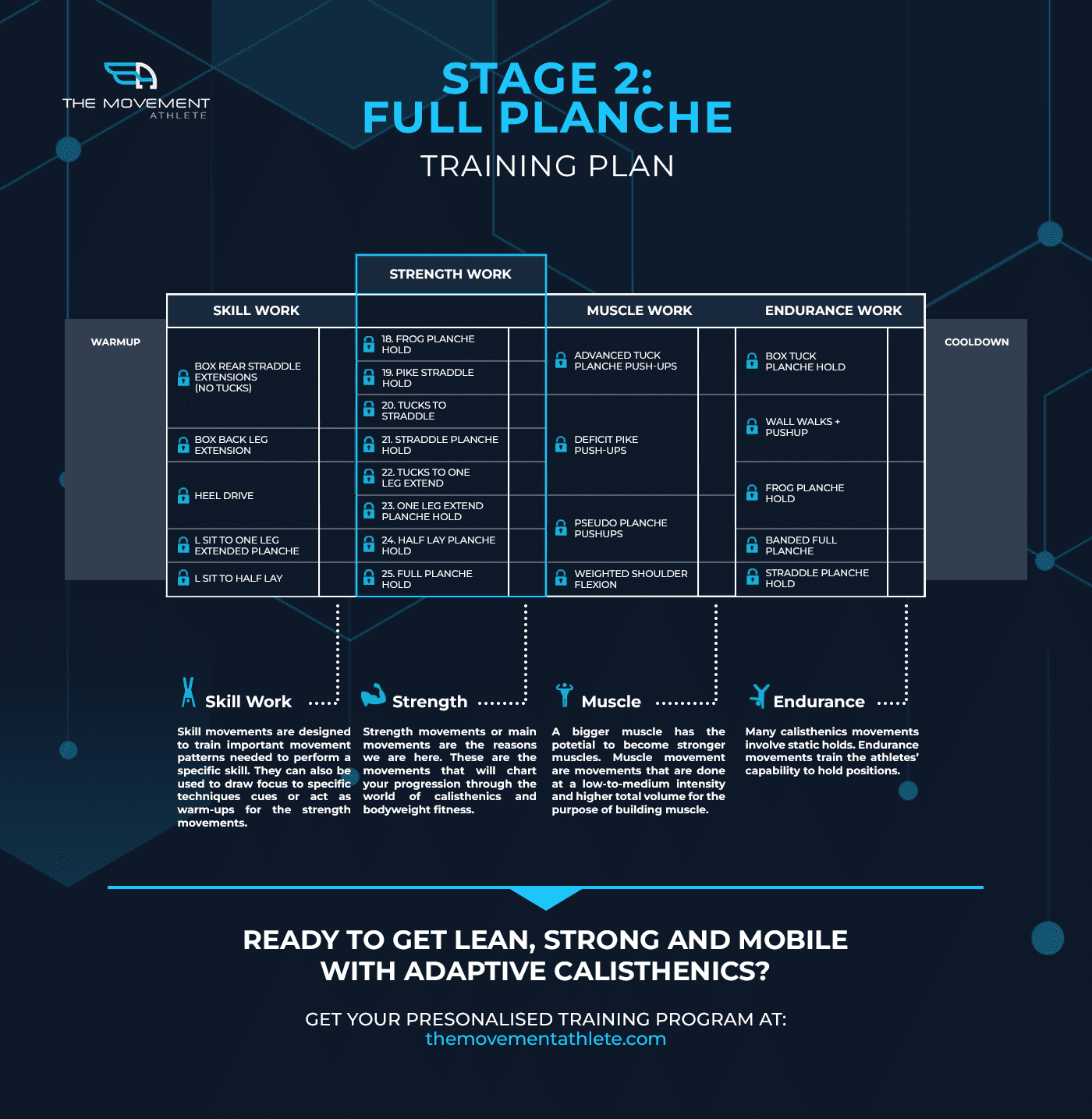
The Tuck Planche Progression
Here is our progression as well as briefs on committing to the planche journey.
Remember that tuck planche is a highly complex skill that’s why don’t get overwhelmed too much when you see the long list of the progression. Each exercise helps massively in bridging gaps for you to achieve a full planche safely and efficiently.
Prerequisites: Push-up fundamentals & Bodyline fundamentals
Goal: Tuck planche
Priorities:
Our ultimate goal is to learn tuck planche, but tuck planche doesn’t happen overnight. It’s the result of the good habits you have built over time. Here are the elements that we need to learn and refine:
Body alignment
Straight-arm strength
Leaning forward with proper body posture
Upper and lower body awareness
Scapula protraction
Wrist mobility
General pushing strength
You can check out our article on “How to Perform the Perfect Planche” to review the form and the general requirements to hold the position.
🔑Key reminders you should be aware when you’re practicing your tuck planche progressions:
-
- Watch Form – Once your form breaks, stop. It’s better to practice with short holds with good form than holding it longer but bad form. Build and maintain good habits as it will translate later on in your journey.
-
- Body Alignment – Most positions require a proper bodyline. Do not break the position.
-
- Body Awareness – You should be able to be aware of your mistakes and correct it while in holding the position.
-
- Body Control – Perform every move with control. When entering the static positions, do not rush.
-
- Breathing – It might be difficult to breathe especially when you get to hold a progression only when you’re holding your breath. Mindful breathing when exercises not only helps you perform better, it also helps you get stronger in the long run.
Strength Progression
You still need to solidify your form in order to progress faster and you can do that through these progressions:
1. Knee Planche Hold
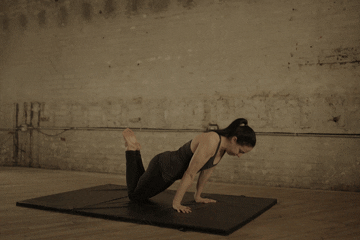
Planche journey begins with the knee planche hold.
How to Perform:
- Start on all fours, hands and knees.
- Keeping your core tight in a straight body position, shift weight forward onto arms.
- Come up onto knees, toes up towards butt. Body should be in a straight line from your knees to your shoulders.
- Keep arms straight, and lean forward. Let your shoulders come out past your palms.
- Hold position for specified time.
- Shift weight back to feet, bend knees and return to kneeling position.
2. Planche Rocks
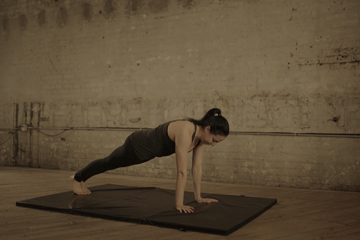
How to Perform:
- Begin by getting into a plank position, arms extended directly below shoulders. Legs straight and feet together.
- Body should form a straight line from ankles to ears.
- Contract abdominals, lean forward shifting weight onto wrists. Shoulder should over wrists.
- Shift weight back, shoulders return to being directly over wrists.
- Repeat rocks back and forth.
3. Wall Rock
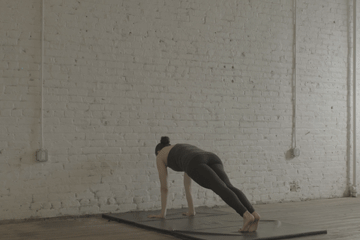
How to Perform:
- To begin, start in a plank position with your head near the wall.
- Elbows straight with shoulders over top of wrists, back straight, and legs together and straight.
- Shift weight forward on wrists, leaning towards the wall.
- Shift weight back to starting plank position.
- Continue rocking back and forth in a tight body plank position.
4. Leaning Plank Hold
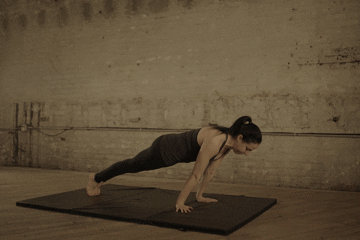
How to Perform:
- Start in a kneeling position with arms straight, and palms on the floor in front of you.
- Extend legs straight out, up on toes.
- Keeping your core tight in a straight body position, shift weight forward onto arms, leaning shoulders past hands.
- Hold the position for specified time.
- Shift weight back to feet, bend knees and return to kneeling position.
5. Box Planches Rock
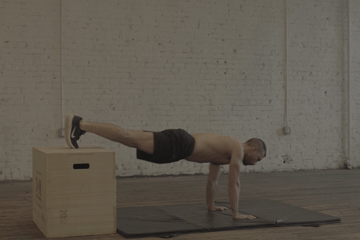
How to Perform:
- Begin by getting into a plank position with legs elevated up on a box, and arms extended directly below shoulders. Keep legs straight and feet together.
- Body should form a straight line from ankles to ears.
- Contract abdominals, lean forward shifting weight onto wrists. Shoulder should over wrists.
- Shift weight back, shoulders return to being directly over wrists.
- Repeat rocks back and forth for specified time.
6. Box Plank Hold
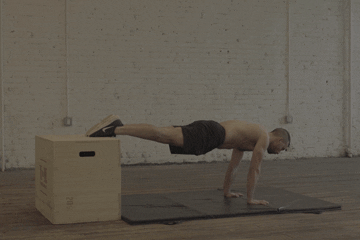
How to Perform:
- From a kneeling position in front of a box, lean forward onto your palms, straightening your elbows.
- Lift your right leg up, straighten your knee, placing the top of your foot onto the box.
- Using your core, stabilize and lift up your left leg, and place the foot on the box.
- Legs and back should be straight, forming a straight line from your ankles to your ears.
- Hold the position for specified time.
7. Frog Plank Hold (with Box)
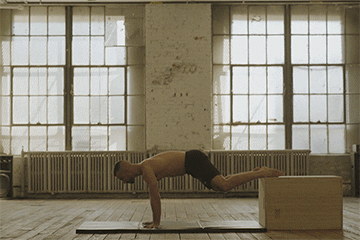
How to Perform:
- From a kneeling position in front of a box, lean forward onto your palms, straightening your elbows.
- Lift your right leg up, placing the top of your foot onto the box, knee bent facing laterally. Using your core, stabilize and lift up your left leg, and place the foot on the box.
- Knees stay bent, facing outward, while soles of feet are close and facing inward.
- Hold the position for specified time.
- Lower legs one at a time.
8. Pseudo Planche Hold
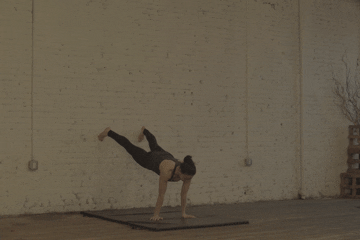
How to Perform:
- To begin, start on hands and knees with back straight, feet close to the wall.
- Walk feet up onto the wall, feet apart, legs straight.
- Lean forward enough until you feel the weight on your hands and Shoulders. Feet must feel weightlessness.
- Keep back straight, pushing through arms.
- Hold position for a specified time.
9. Box Tuck Planche Hold
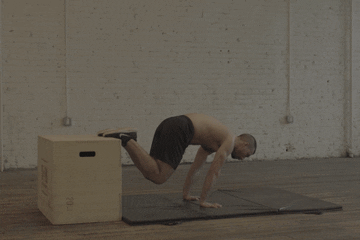
How to Perform:
- From a kneeling position in front of a box, lean forward onto your palms, straightening your elbows.
- Lift your right leg up, placing the top of your foot onto the box, knee bent towards the ground.
- Using your core, stabilize and lift up your left leg, and place foot on the box.
- Knees stay bent, core tightened.
- Hold position for specified time.
- Lower legs one at a time.
10. Box Tuck Planche (1 foot)
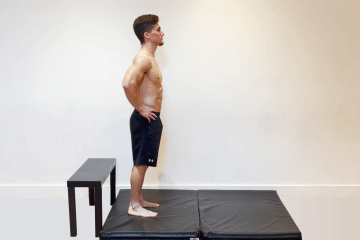
How to Perform:
- Prepare an elevated surface around knee height when standing.
- Place your hands on the floor 2 to 3 feet away from the surface and face away from it.
- Place one leg at the elevated surface.
- Position the rest of the body into a tuck planche while one foot is supported.
- Hold the position for a specified time.
- Step normally back on the ground and switch legs.
11. Crow frog
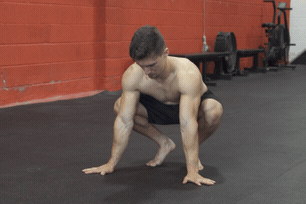
How to Perform:
- Begin in a low squat position.
- Place your hands on the floor shoulder-width apart with locked out arms and depressed protracted shoulders.
- Lean forward, placing the weight on your shoulders and arms while resting your inner thigh on your elbow area.
- Lean forward enough to be able to lift your feet off the floor.
- Hold the position for a specified time.
12. Knees on Forearms Tuck Planche
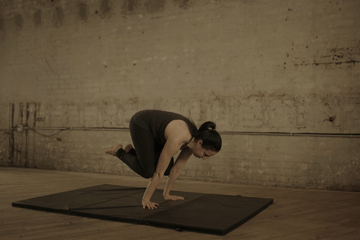
How to Perform:
- To begin, get on your hands and knees. Hold knees off ground, contracting abdominals, up on your toes.
- Push through your arms, leaning forward, elbows locked out.
- Walk feet in towards hands, place knees. Press through scapulas.
- Hold the position for a specified time.
- Lower feet, and knees to the floor.
13. Knees on Forearms Tuck Planches Moving
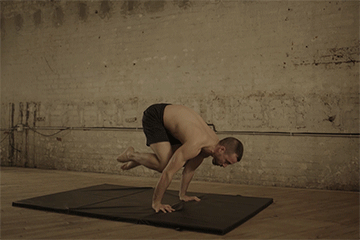
How to Perform:
- To begin, get on hands and knees. Hold knees off ground, contracting abdominals, up on your toes.
- Push through your arms, leaning forward, elbows locked out.
- Walk feet in towards hands, place knees. Press through scapulas.
- Use core and bring right knee off forearm and between arms, while left knee stays on forearm.
- Return right knee to forearm, and repeat with left leg.
- Repeat for specified times.
- Lower feet, and knees to the floor.
14. Box Straddle to Tuck Planche Slides
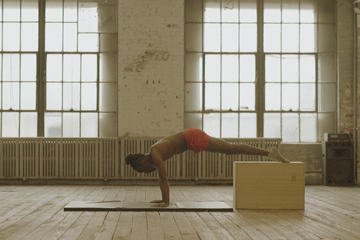
How to Perform:
- Begin with arms straight, legs straight and in a straddle with toes up on the box.
- Tuck knees in quickly towards your chest.
- Shoot legs out straight and in a straddle again as toes return to resting on the box.
- Repeat for specified repetitions.
15. Floor Straddle to Tuck Planches Slide
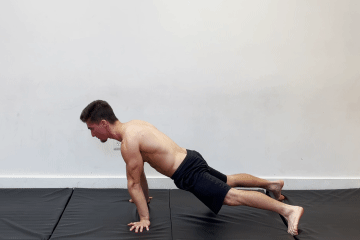
How to Perform:
- Begin in a push-up position with legs in a straddle position.
- Lean forward, and slide the feet until knees are tucked to your chest.
- Lean even forward to move into a tuck planche position.
- Hold for a brief moment.
- Lean forward, then slowly extend your legs backward to get back to the starting position.
- Repeat for specified repetitions.
16. Tuck Planche Hold
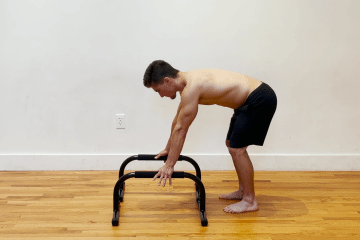
How to Perform:
- Depress shoulders and protract the scapula.
- Place your hands on the floor shoulder-width apart with straight arms.
- Lean forward enough until your feet feel weightlessness.
- Tuck your knees towards your chest.
- Lift your feet off the ground.
- Hold the position for a specified time.
17. Advanced Tuck Planche Hold
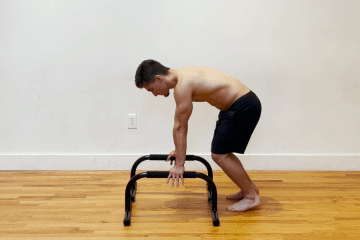
How to Perform:
- Depress shoulders and protract the scapula.
- Place your hands on the floor shoulder-width apart with straight arms.
- Lean forward enough until your feet feel weightlessness.
- Tuck your knees just below your hands with extended hips.
- Lift your feet off the ground.
- Hold the position for a specified time.
tuck Skill Element
The skill element now focuses on getting you to the correct form, technique and cueing to be able to optimize your performance when learning tuck planche. It’s all about being effecient and learning good habits.
Remember that no matter how strong you are, without proper skill work, you will never master or learn planche.
Muscle Element
Very similar to the wall handstand muscle element, here you’ll focus more on other aspects than building muscle.
Endurance Element
For endurance, you’ll train more difficult moves in order to hold the handstand.
So here’s the list of exercises:
With The Movement Athlete app, your planche program will be already structured depending on your skill level. It will also address your weak points in your tuck planche and help you get over your your plateaus safely and progressively as possible.
You don’t have to worry about your program because the app got it covered for you. As you progress and unlock new skills, your program progresses with you!
Begin your personalized journey though this short assessment below.
TAKE THE ASSESSMENT NOW!